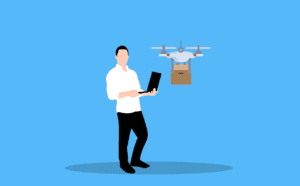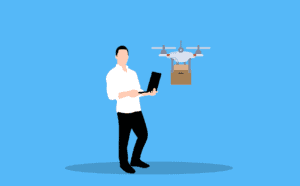Can delivery robots help us reduce our emissions?
 14 Maret 2022
14 Maret 2022
Photo: Pixbay/Ievhenii_Putiata
Cities worldwide are starting to use autonomous vehicles and delivery robots to lower transportation emissions. At the same time, climate change is one of the most pressing concerns facing the global community today with transportation playing a significant role in carbon emissions.
Putting the two trends together, many scientists, engineers and policymakers believe delivery robots and other autonomous vehicles may hold the key to reducing emissions. However, this strategy may have some challenges to overcome before it can go mainstream.
Delivery robots surged in popularity during the Covid-19 pandemic, when more people ordered food and goods for delivery than ever before. Businesses and delivery drivers didn’t have the resources and staff to meet demand in many areas. Robotics and engineering companies responded by launching autonomous vehicle-powered delivery services. Robots offered the perfect solution at the time since they also minimized exposure to Covid-19.
This is an interesting turn of events for autonomous vehicles, particularly delivery robots. The city of San Francisco banned delivery robots from its sidewalks in 2017. A few years later, though, Pennsylvania is among a dozen states in the U.S. that have formally legalized delivery robots on public roads as of 2021. Pennsylvania classified the robots as pedestrians rather than vehicles.
This indicates the long-term impact the Covid-19 pandemic will have on delivery robots. They have remained popular even after mass lockdowns. They are convenient and efficient, and they may be instrumental in reducing carbon emissions. There are a few key reasons for this.
Can robots help reduce emissions?
One of the biggest advantages delivery robots have over cars or delivery vans is their significantly lower power consumption. These robots are much smaller than a normal vehicle and powered by electricity rather than gasoline. Their use drastically reduces carbon emissions from transportation.
Studies by the EPA show that transportation accounted for 29% of U.S. carbon emissions as of 2019. More people are working from home and shopping online, and demand for delivery services will only grow in the years ahead. Battery-powered autonomous robots could make a serious dent in the amount of emissions created by the increase in delivery transportation.

Behind the scenes, the way autonomous delivery robots are programmed and operated could reduce their power needs even further. They drive and navigate using AI algorithms, which map out the most efficient routes the robot can take to get to its destination.
Even if it’s using the same roads as a delivery vehicle with a human driver, it will complete its deliveries much more efficiently. They could compete with full-size delivery vans as a result, making numerous small hauls around communities rather than one big one.
Delivery robots may not replace conventional vehicles entirely, but they can significantly reduce the amount of time those cars have to spend on the road.
Studies have found that various autonomous delivery methods, including road and sidewalk rovers and airborne drones, are more efficient than their conventional counterparts across the board. Efficient, effective electric-powered transportation systems will be crucial to cutting down carbon emissions in the years and decades to come.
Challenges remain
There are still some potential challenges delivery robots may face, though. San Francisco’s robot ban is a perfect example of safety concerns that many still have. A senator from Michigan shared similar skepticism in an interview with WIRED on the subject in 2020, bringing up the danger the robots pose if they malfunction on the job.
Additionally, delivery robots are not the same thing as autonomous delivery vans. They have a fairly low carrying capacity, which limits the number and type of deliveries they can complete.
Presumably, the robots need to remain within a certain radius of a hub or charging station, so they are also limited in their potential range. This could make adoption slow, especially in areas further from major cities.
It is also worth noting that even if the delivery robots themselves are powered by electricity, the source of that power may not be environmentally friendly. These robots need to be powered by clean electricity to be carbon neutral and maximize emissions reduction; for example, maybe their charging stations could be fueled by solar panels.
This is one core concern that will need to be addressed as their usage grows. However, the key to addressing climate change lies in new technologies that empower people to live greener lives.
Robotics is one of many examples that have the potential to heal the environment and prevent emissions from doing any more damage. Delivery robots may seem like a concept straight out of science fiction, but they are already roaming the streets.
These robots could pave the way for a new generation of autonomous, electric vehicles that completely transform how humanity thinks of transportation and its impact on carbon emissions.
The post Can delivery robots help us reduce our emissions? appeared first on Sustainability Times.
